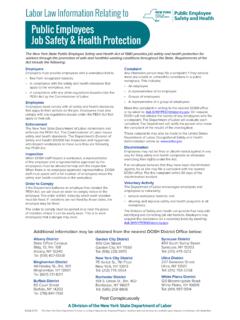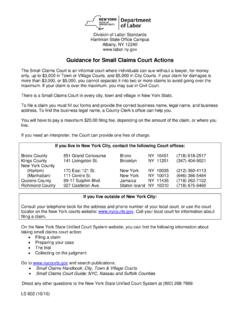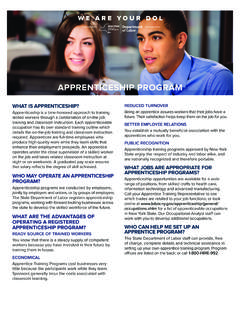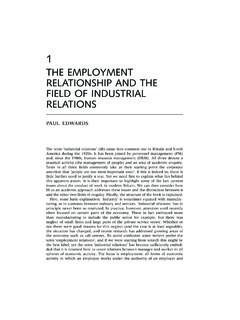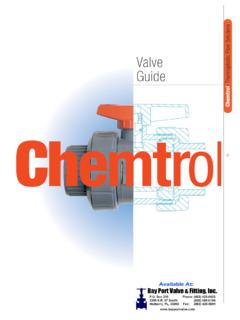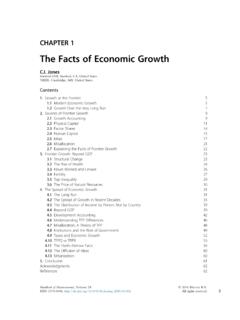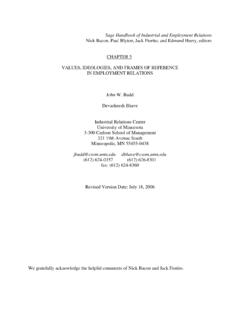Transcription of STATE OF NEW YORK DEPARTMENT OF LABOR
1 ATP 15-201 (07/2006) Apprentice Training Section Page 1 SHEET METAL WORKER CODE O*NET CODE This training outline is a minimum standard for Work Processes and Related Instruction. Changes in technology and regulations may result in the need for additional on-the-job or classroom training. WORK PROCESSES Approximate Hours A. Tools and Machinery 1,500 2,000 1. Safety 2. Using and caring for hand tools and equipment 3. Using and caring for power tools and machinery 4. Using and caring for computerized machinery (if available) B. General Sheet Metal Work 2,250 3,000 1. Safety 2. Drafting and layout 3. Selecting materials 4. Cutting, stamping, bending, straightening, shaping stock 5. Fastening and joining 6. Finishing 7.
2 Using ladders, scaffolding, hoists 8. Installing C. Welding 750 750 1. Shielded metal arc welding 2. Gas metal arc welding 3. Gas tungsten arc welding 4. Orbital welding (optional) D. Heating, Ventilation and Air Conditioning 1,500 1,750 Systems (HVAC) E. Testing, Adjusting & Balancing (TAB)/ 500 750 Service and Maintenance of HVAC Systems STATE OF NEW YORK DEPARTMENT OF LABOR APPENDIX A Sheetmetal Worker - continued Approximate Hours ATP 15-201 (07/2006) Apprentice Training Section Page 2 F. industrial Sheet Metal Work (optional)* 750 750 Including such work as: 1. blow pipe 2. cyclones 3. bag houses 4. conveyor systems G. Architectural Sheet Metal Work (optional)* 500 750 H.
3 Food Service Equipment (optional)* 250 250 _____ Total Hours 8,000 10,000 If optional Work Processes are not completed, the hours should be devoted to further mastery of the Work Processes that are required. Apprenticeship work processes are applicable only to training curricula for apprentices in approved programs. Apprenticeship work processes have no impact on classification determinations under Article 8 or 9 of the LABOR Law. For guidance regarding classification for purposes of Article 8 or 9 of the LABOR Law, please refer to New York STATE Education DEPARTMENT Page 3 APPENDIX B SHEET METAL WORKER RELATED INSTRUCTION Safety OSHA 10-hour construction course Shop safety Field safety Working safely Emergency procedures Hazard communication Awareness of, and safety in working around, hazardous materials likely to be encountered in the trade Asbestos Awareness minimum 4 hours (see attachment) Awareness of dangers of drug and alcohol abuse Safety in field installation Identifying hazards (shop and field)** Emergency response preparedness and crisis management (optional)
4 ** First Aid minimum hours every 3 years Drafting/Blueprints, Plans & Specifications Drafting equipment and materials Geometric construction Lines & lettering Orthographic projection Pictorial drawing Freehand sketching Reading and interpreting contract documents Reading specifications Architectural drawings (if Work Process G on Appendix A is selected) Structural drawings Mechanical drawings Electrical drawings Sheet metal shop drawings CAD in the sheet metal industry (if available) Using CAD (if available) CAM in the sheet metal industry (if available)** Using CAM (if available)** Drafting HVAC duct sizing designs** Drafting architectural and ornamental designs (if Work Process G on Appendix A is selected)** Drafting food service and beverage dispensing equipment designs (if Work Process H on Appendix A is selected)** Sheetmetal Worker Related Instruction continued New York STATE Education DEPARTMENT Page 4 Mathematics Arithmetic, as applied to the trade Algebra, as applied to the trade Geometry, as applied to the trade Trigonometry, as applied to the trade Using true lengths in triangulation Field measuring Estimating Hardware and buyout components** Bidding and job costs Computer estimating (if available)
5 Trade Theory and Science Sheet metal & metal products Plastics and fiberglass Hand tools Shop equipment Organizing tools and equipment for a job Principles of layout Layout of metal Introduction to parallel lines Introduction to radial lines Introduction to triangulation Layout of penetrations Advanced layout and pattern development** industrial applications (pollution control) (If Work Process F on Appendix A is selected) HVAC: air handling units (plenums and components) Architectural & ornamental applications (if Work Process G on Appendix A is selected) Shop fabrication Seams, locks, and edges Duct elbows other than 90 degrees Duct S offsets Introduction to field installation Hoisting and rigging Round tees (parallel lines) Round elbows Round tapers (radial lines) Round tapers (triangulation)
6 Square-to-rounds on a pitch Transitions Duct change elbows Change ogee offsets Y branches Hangers and anchors Introduction to computer operations Sheetmetal Worker Related Instruction continued New York STATE Education DEPARTMENT Page 5 Trade Theory and Science continued Introduction to HVAC systems Air and its properties Ventilation Heating Cooling Airflow in ducts Fans Duct systems Duct design Duct elevations and clearance Preparing the duct Fire and smoke dampers Outlets and other HVAC buy out items Installing HVAC systems Installing central HVAC Installing package units TAB work Preparation for TAB TAB instrument use TAB system balancing Pressure testing Indoor air quality Special ventilation needs Refrigeration cycle Electricity Controls Servicing HVAC equipment Start-up and commissioning of system Energy management systems Boiler breechings Testing, adjusting and balancing of environmental system** Air test preparation Hydronics test preparation Sound Service work** Power supplies (electrical & pneumatic) Test instruments Air distribution system Soldering Welding Shielded metal arc welding Gas metal arc welding Gas tungsten arc welding Codes and symbols Carbon arc brazing** Orbital welding (if available)** Sheetmetal Worker Related Instruction continued New York STATE Education DEPARTMENT Page 6 Trade Theory and Science continued If Work Process F on Appendix A is selected.
7 industrial work Blowpipe systems Material handling systems If Work Process G on Appendix A is selected: Introduction to architectural sheet metal Architectural sheet metal practices Roof jacks Roof drainage systems Flashings Waterproofing roof edges and walls Installing strip items Metal roofs Specialized roofs Ventilators and louvers Siding and decking** Additional architectural sheet metal work Interpersonal Workplace Skills Communication Customer relations Time management Introduction to supervision** industrial and LABOR relations (20 hours) History and background (6 hours, 1st year) Current laws and practices (14 hours, 2nd year) Sexual harassment prevention training 3 hours minimum Other Related Courses as Necessary ** These topics are primarily intended for apprentices in 5-year programs.
8 A Minimum of 150 Hours of Related Instruction is Required for Each Apprentice for Each Year. New York STATE Education DEPARTMENT Page 7 ATTACHMENT TO APPENDIX B Asbestos Awareness This course must be delivered by one of the following: 1. A provider currently approved by the New York STATE DEPARTMENT of Health to deliver asbestos safety training. 2. A person holding a current Asbestos Handler certificate from the New York STATE DEPARTMENT of LABOR in the title of: Inspector, Supervisor, Project Monitor, Management Planner, or Project Designer. 3. Anyone otherwise approved by the New York STATE Education DEPARTMENT . Minimum course contents must include the following: 1. Definition of asbestos 2. Types and physical characteristics 3. Uses and applications 4.
9 Health effects: Asbestos-related diseases Risks to families Cigarette smoking Lack of safe exposure level 5. Employer-specific procedures to follow in case of potential exposure, including making a supervisor or building owner immediately aware of any suspected incidental asbestos disturbance so that proper containment and abatement procedures can be initiated promptly. Notwithstanding the above course requirement, employers are advised that they must also be in compliance with New York STATE DEPARTMENT of LABOR industrial Code Rule 56 at all times. Employers are further advised, and must advise all apprentices, that completion of the above course requirement does not authorize any person to remove, encapsulate, enclose, repair, disturb, or abate in any manner, any friable or non-friable asbestos, asbestos containing material, presumed asbestos containing material, or suspect miscellaneous asbestos containing material.
10
